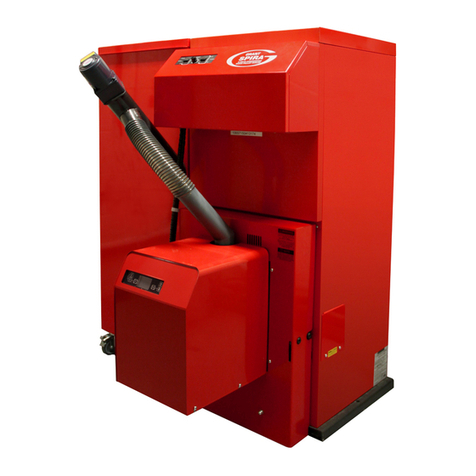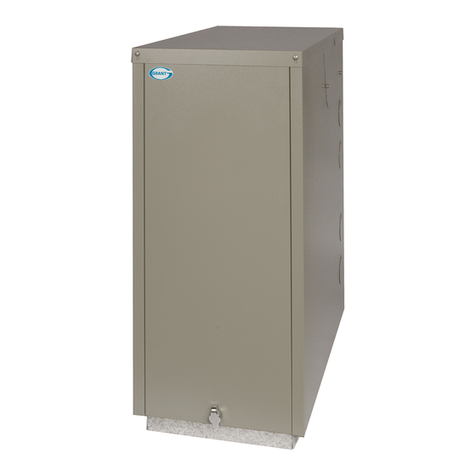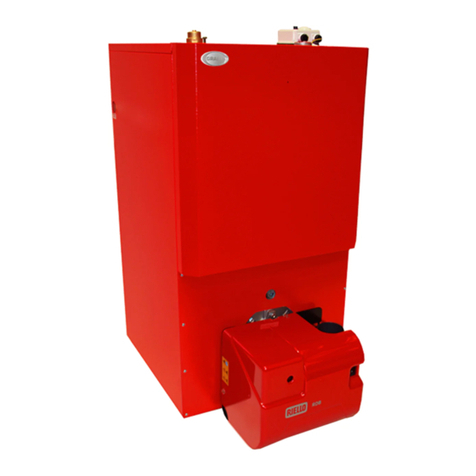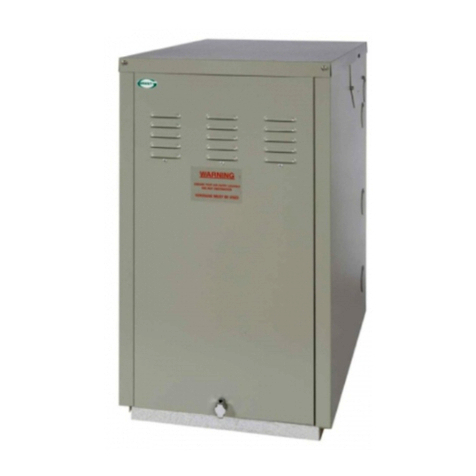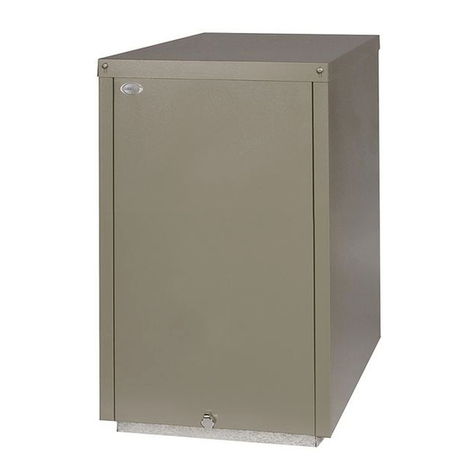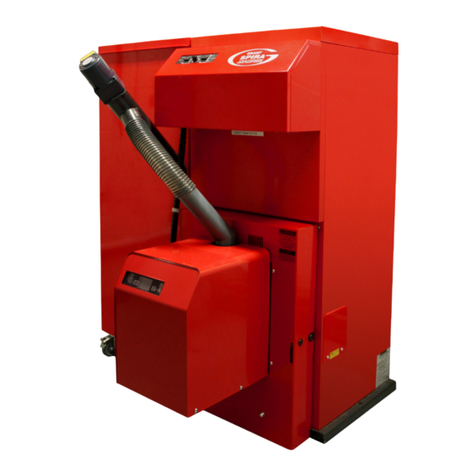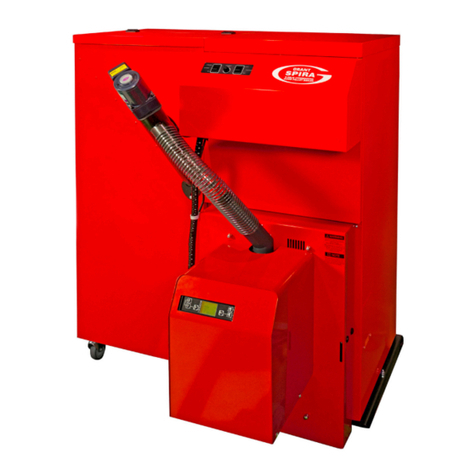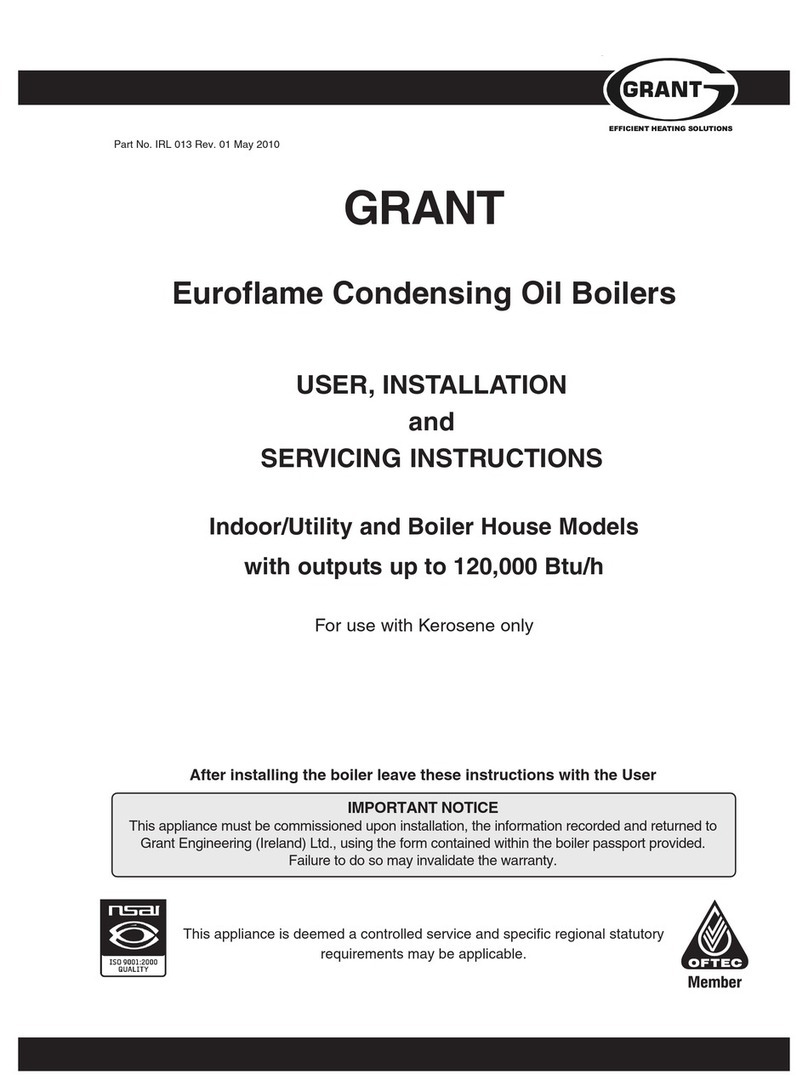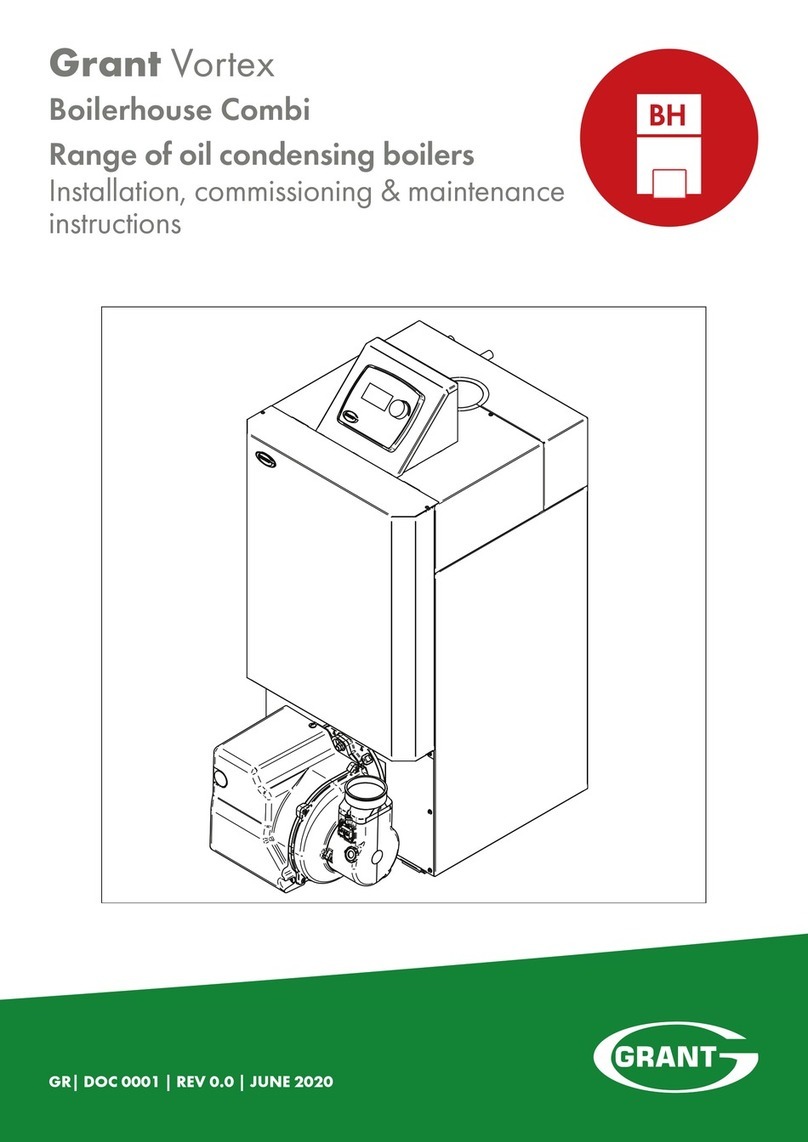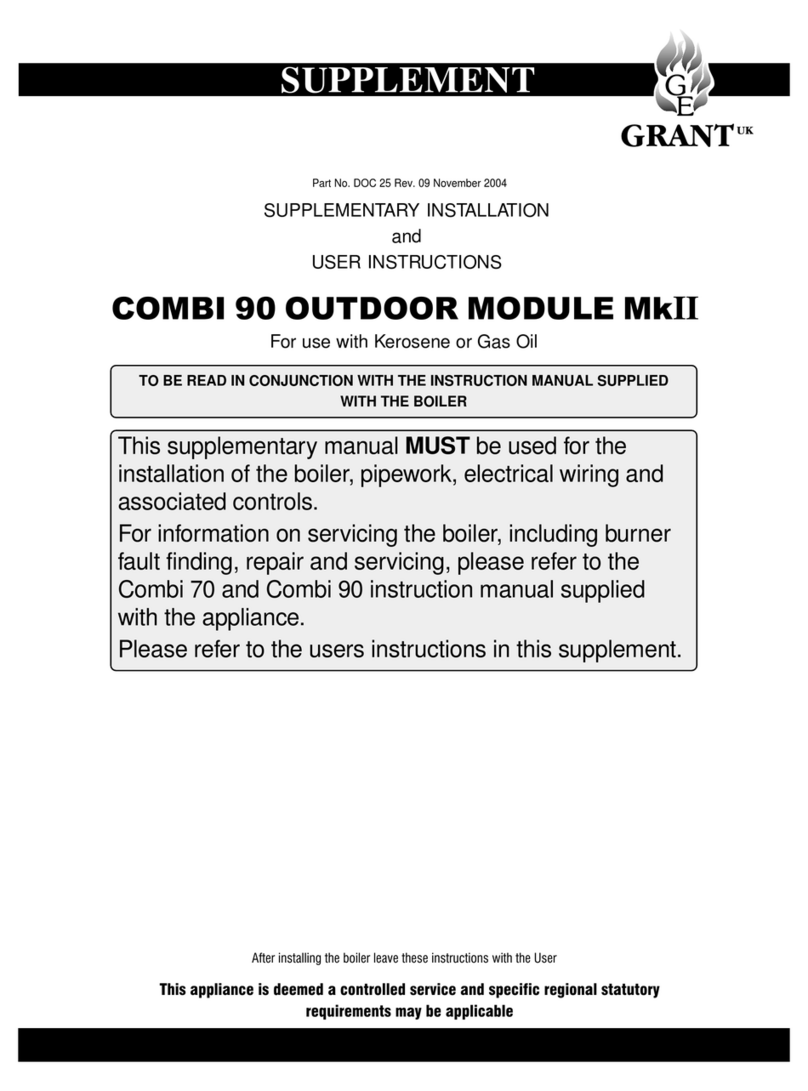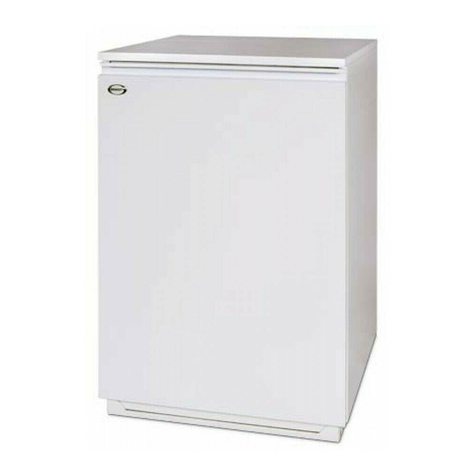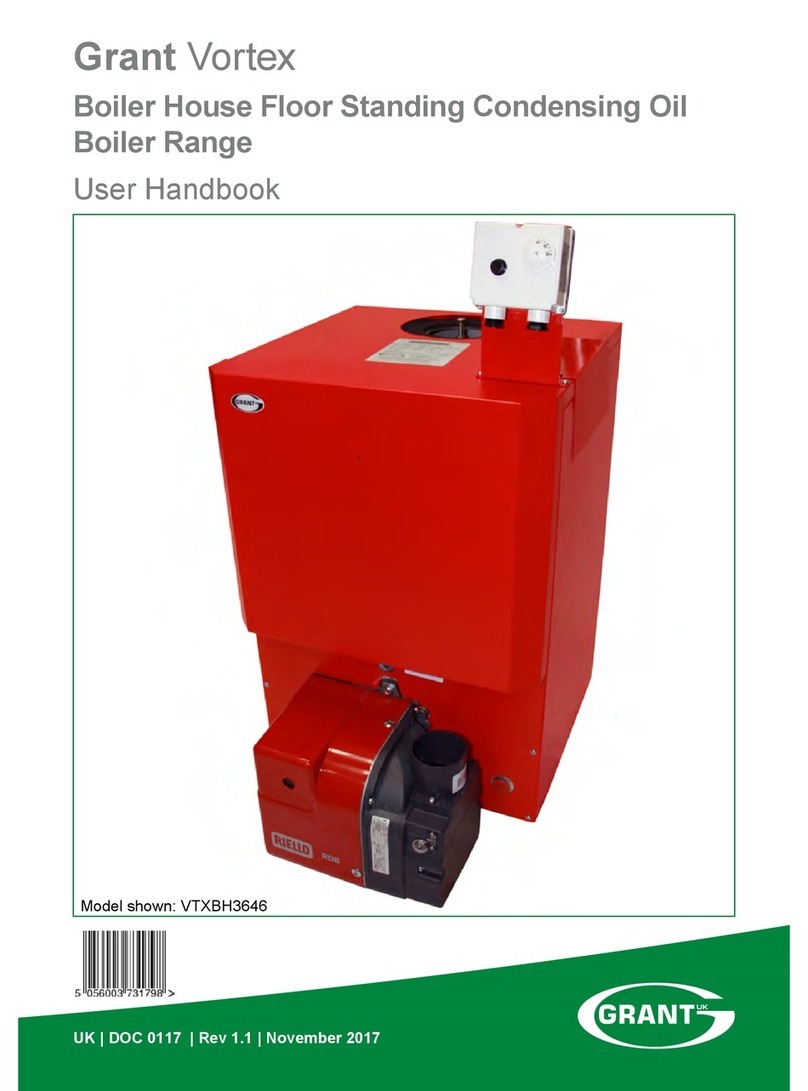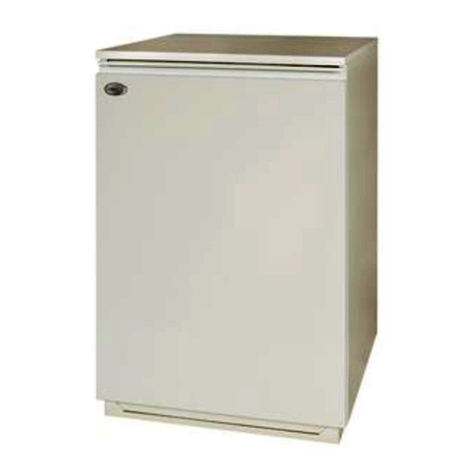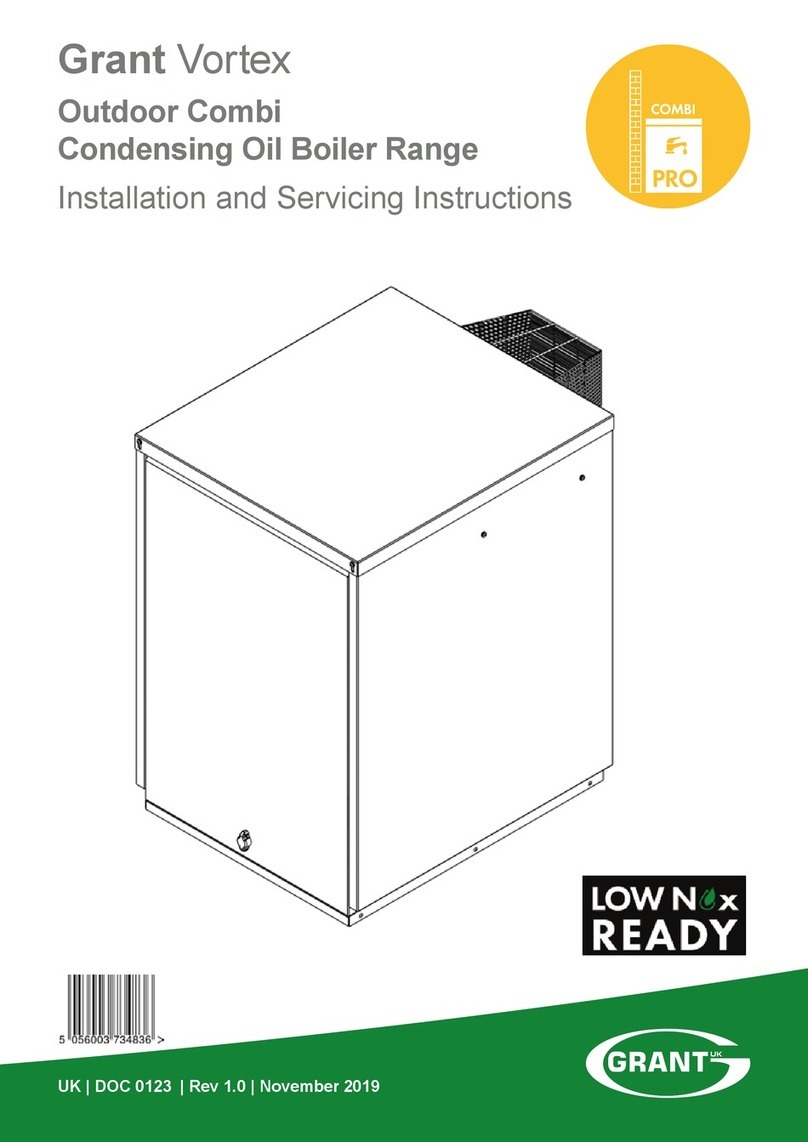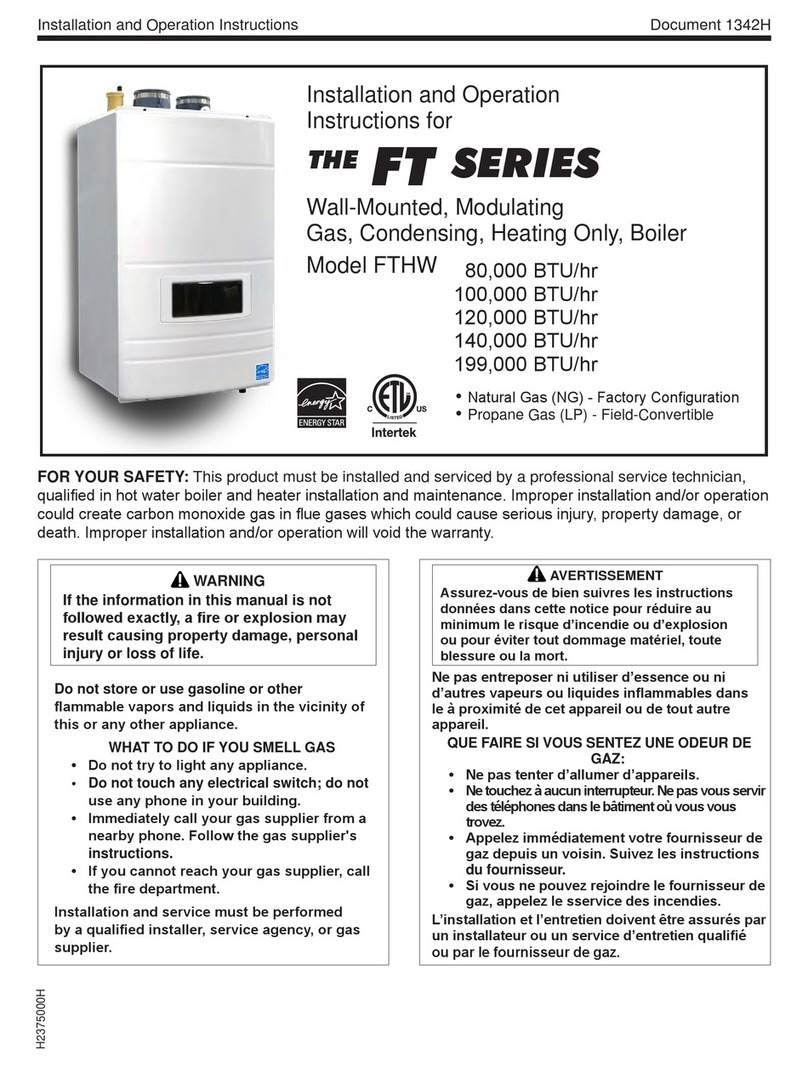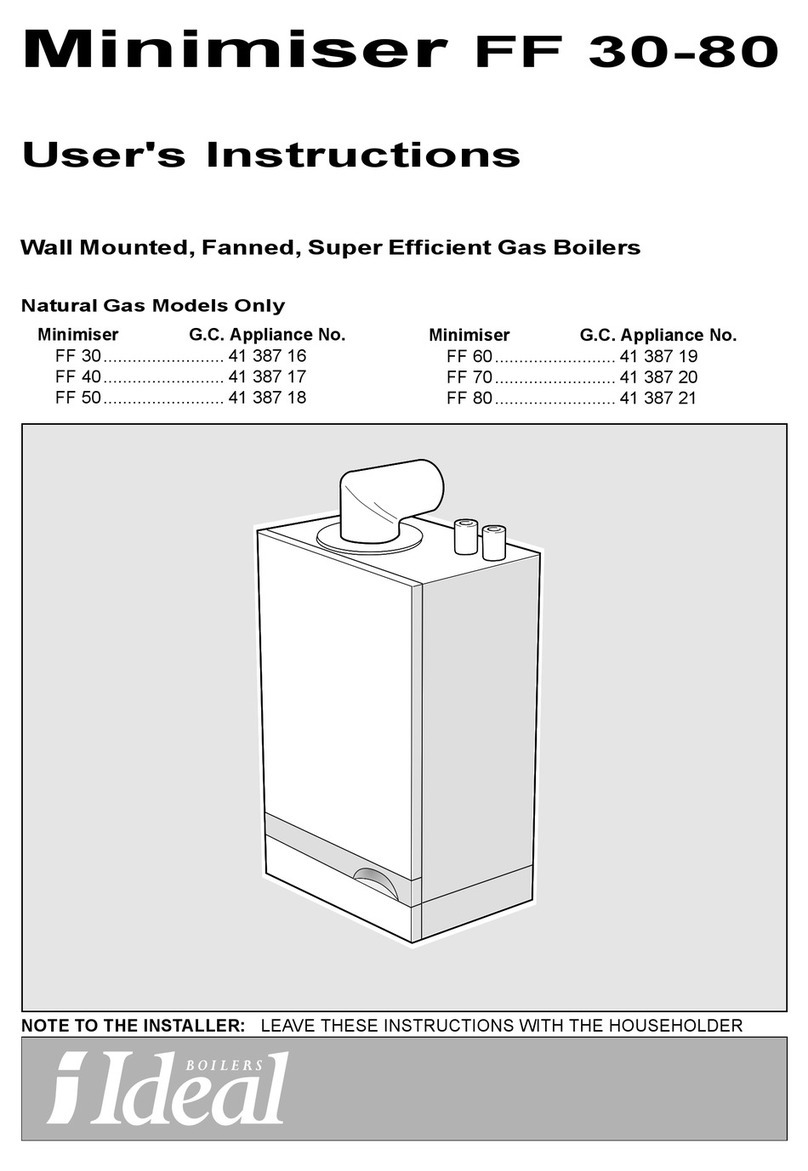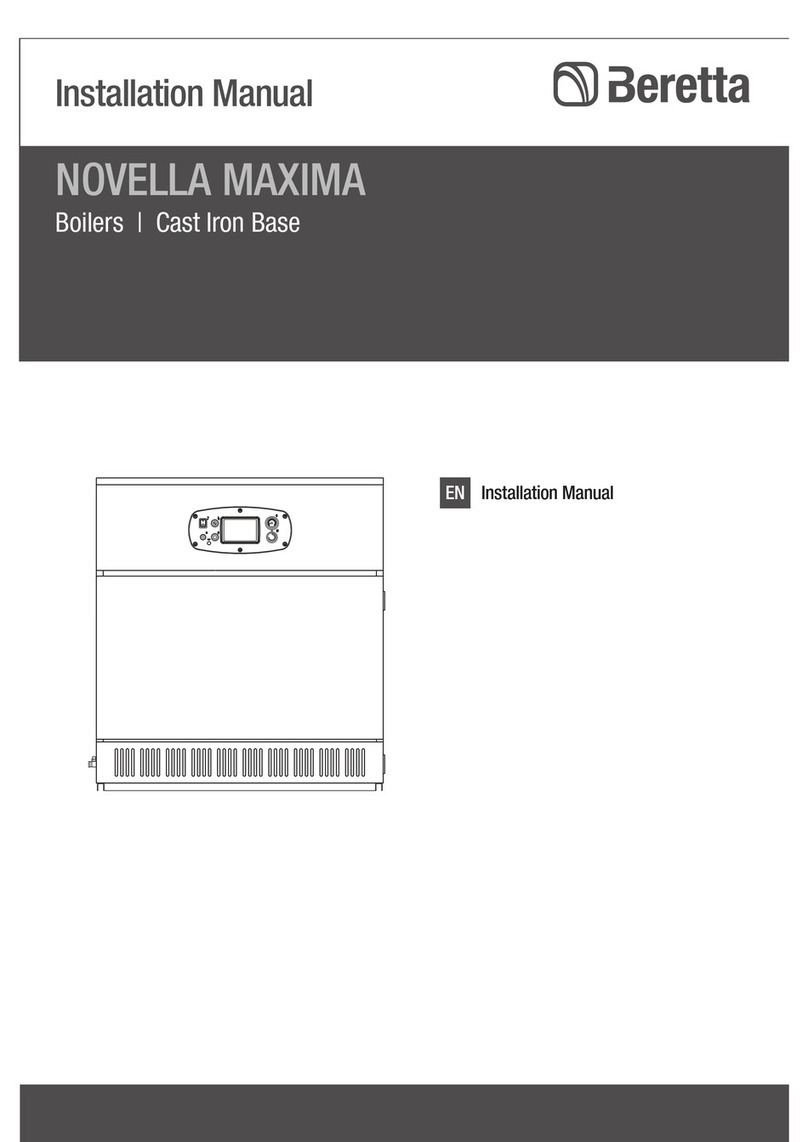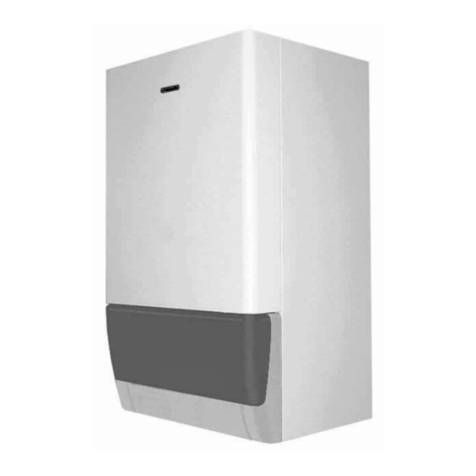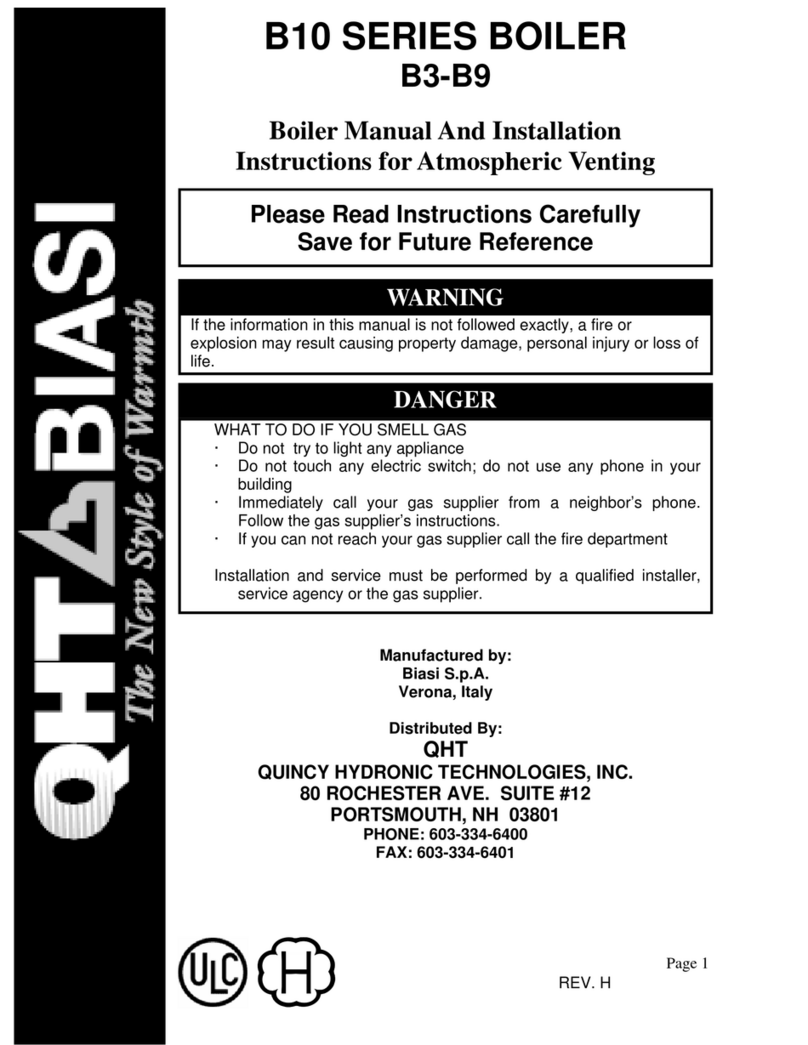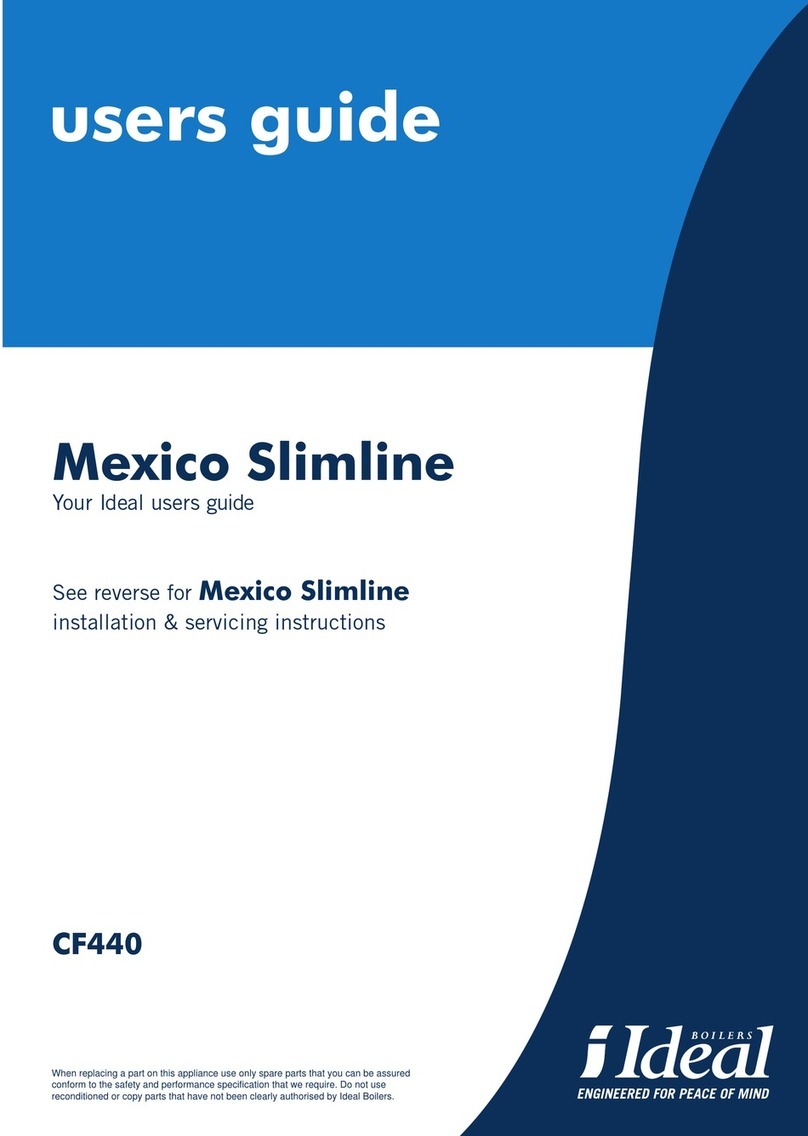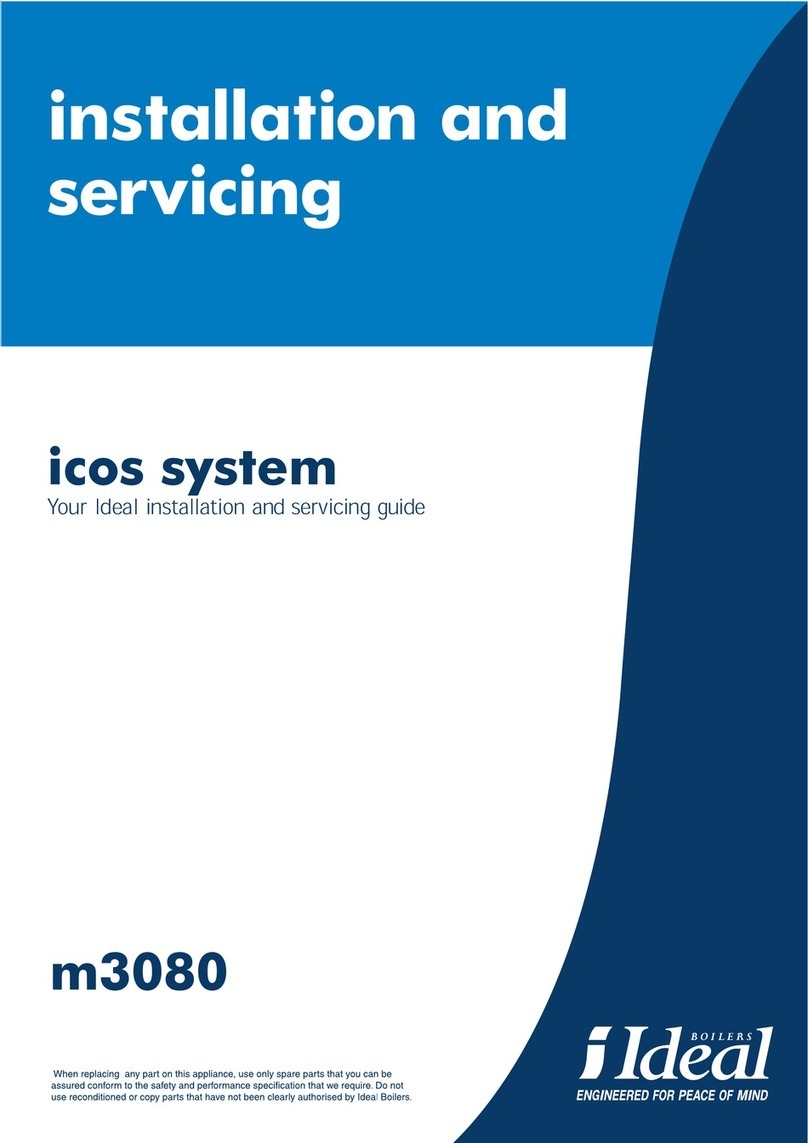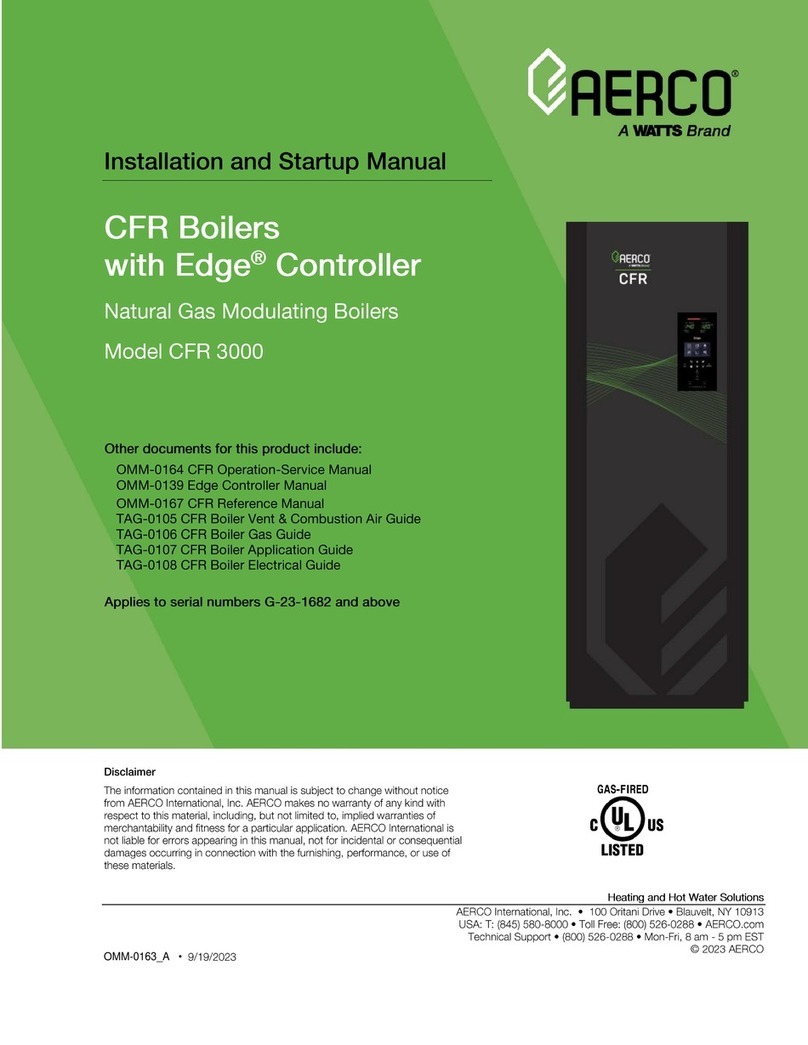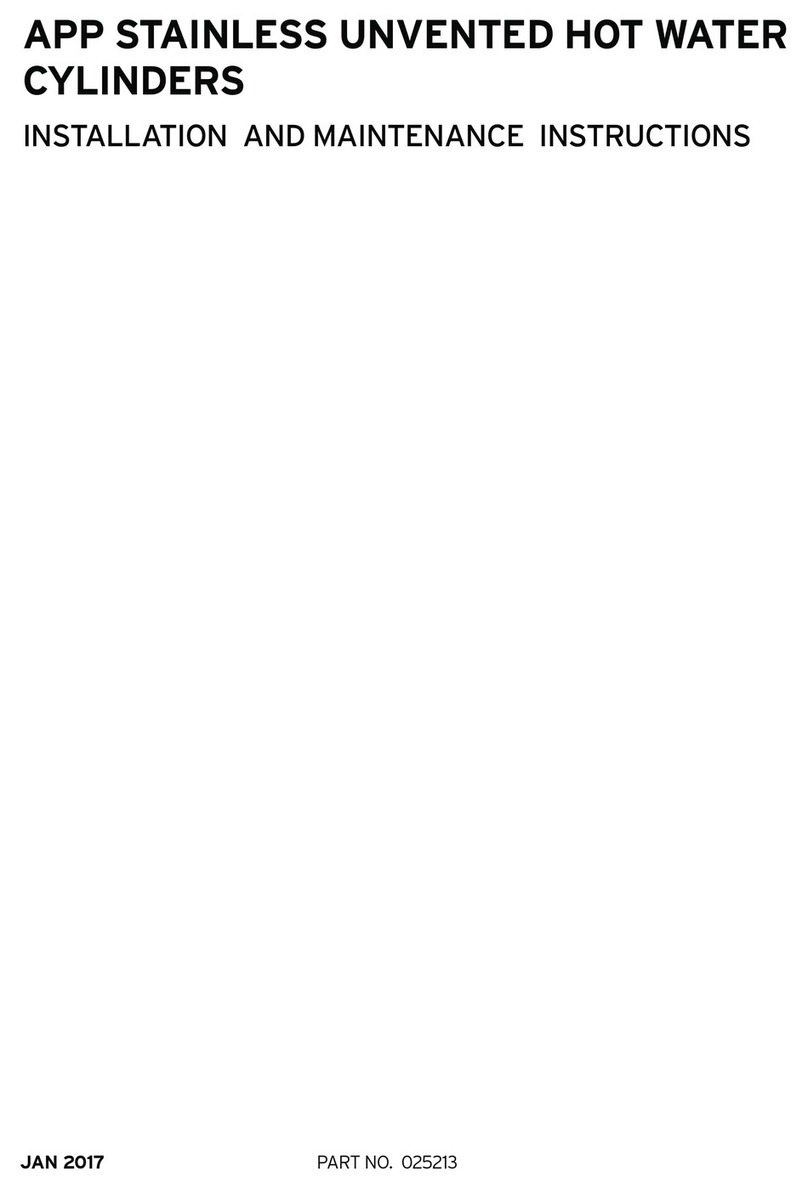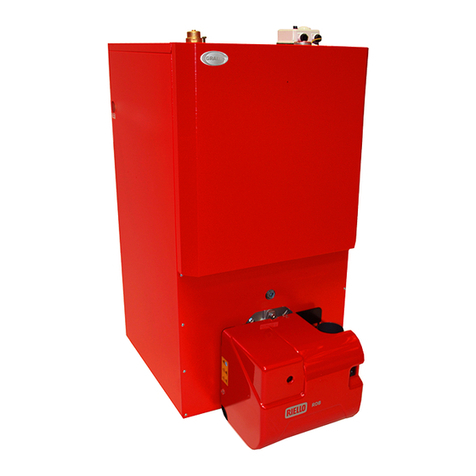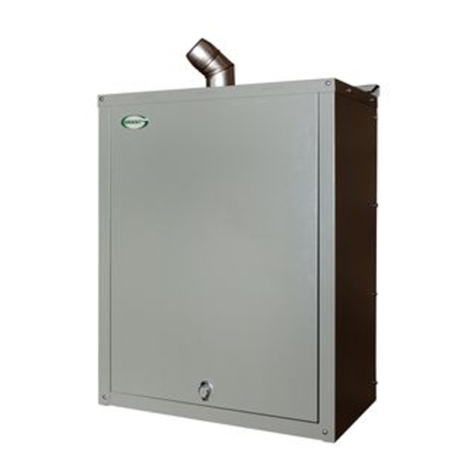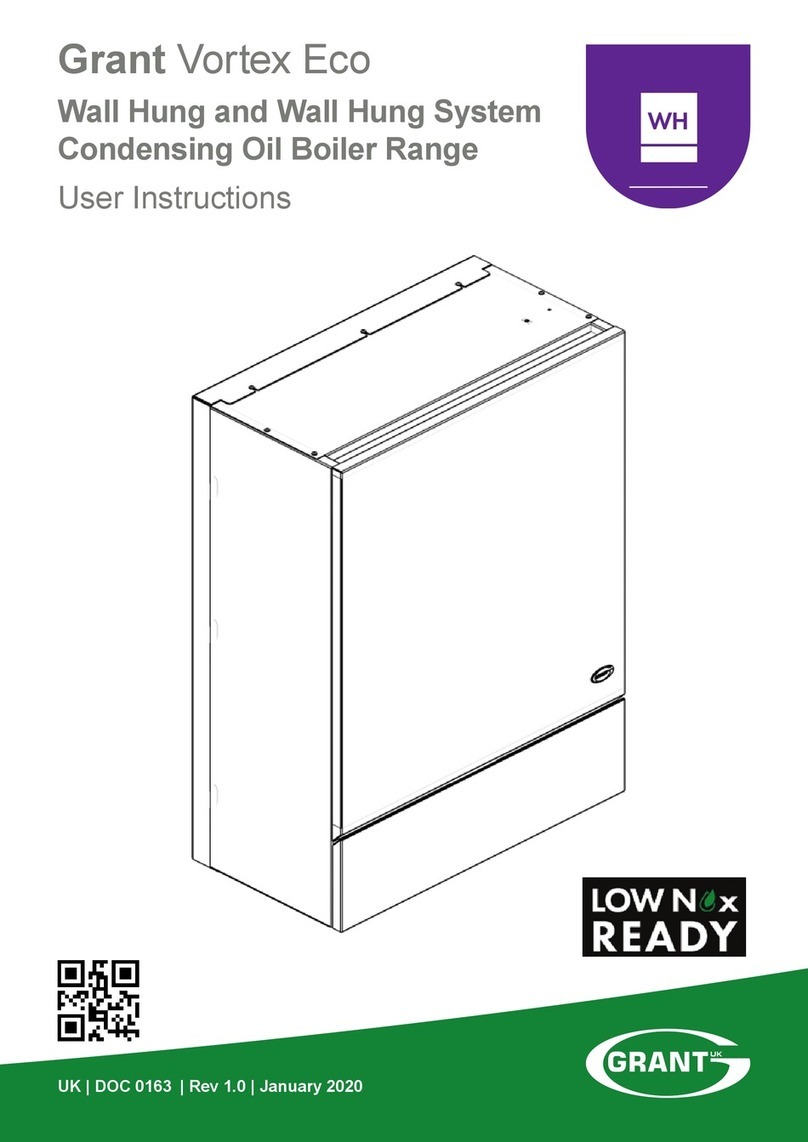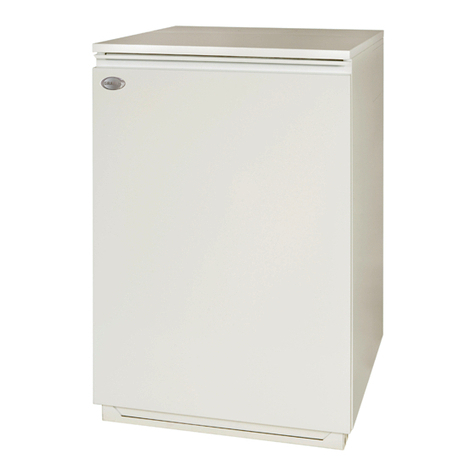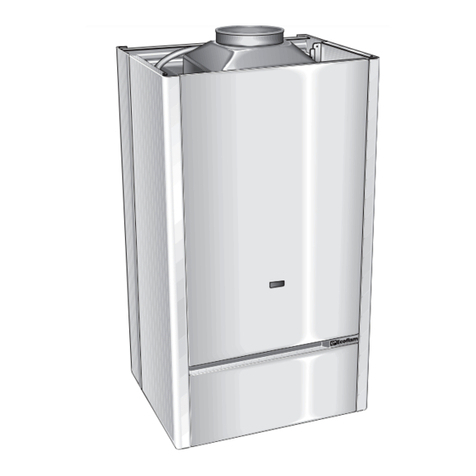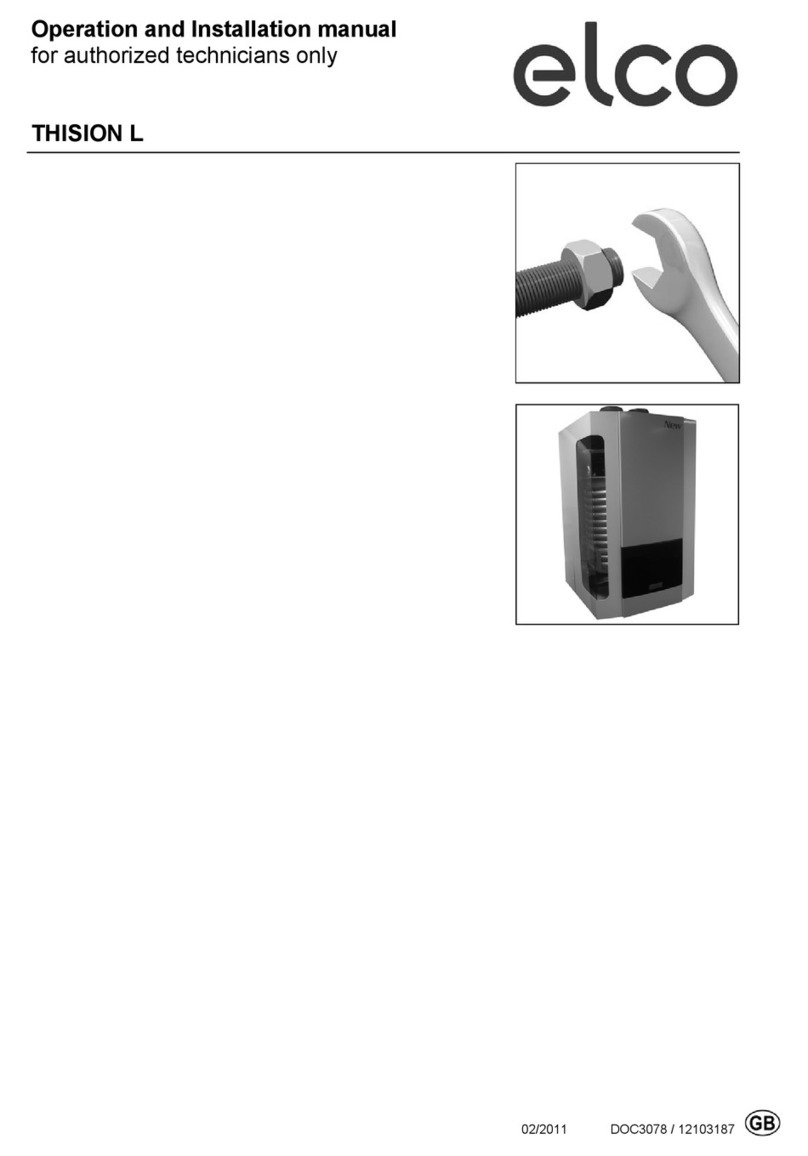
Section 4: Installation Page 15
plastic pipe manufacturer that the pipe to be used is suitable for
the temperature and pressures concerned.
Plastic pipe must be Class S to BS 7291-1.
! WARNING !
When plastic pipe is used, the system MUST incorporate
a low level pressure switch to shut off power to the boiler
if the system pressure drops below 0.2 bar. A suitable low
pressure switch kit is available to purchase from Grant UK
(product code: MPCBS62).
UNDERFLOOR PIPEWORK
Plastic pipe may be used on underoor oor systems where the
plastic pipe is tted after the thermostatic mixing valve. Copper
tube must be used for at least the rst metre of ow and return
primary pipework between the boiler and the underoor mixing/
blending valves.
4.6 CONNECTIONS
4.6.1 FLOW AND RETURN CONNECTIONS
Refer to Section 5.
4.6.2 CONDENSATE CONNECTION
The condensate trap is supplied loose in the burner box and
needs to be tted as shown in Figure 6-2.
Refer to Section 6 for details of the condensate disposal pipework.
4.7 PREPARATION FOR
INSTALLATION
1. Carefully remove the packaging from the boiler and remove it
from the transit pallet.
2. Pull off the boiler front panel and remove the literature pack.
3. Lift off the two parts of the case top and remove the water
connecting ttings.
4.8 INSTALLING THE BOILER
1. Having decided upon the position of the boiler and type of
ue, prepare the wall as described in Section 9. Ensure
that the ue terminal position complies with the necessary
clearances.
2. Make the water connections as described in Section 5. If
access will be restricted, make any connections to the boiler
before placing it in its nal position. Refer to Section 7 if the
boiler is to be used on a sealed system.
! NOTE !
If using a balanced ue system - install the balanced ue
system before connecting the heating system pipework to
the boiler. Once the ue system is tted then complete the
water connections and ll the heating system.
3. Ensure the requirements are met for the disposal of
condensate as described in Section 6.
4. Connect the power supply as described in Section 8.
5. Connect the ue and ensure there is an adequate air supply
as described in Section 9.
4.9 EXPANSION VESSEL
The Combi XS 26 model is supplied with a separate 24 litre
expansion vessel (and mounting bracket), to be tted in a
convenient position externally to the boiler casing.
The vessel is supplied with an 800mm exible hose with a ½”
BSP male thread.
Using a suitable tting (not supplied), this vessel must be
connected to the heating system, via the exible hose, in a
convenient position where it can be readily accessed for servicing.
The Combi 21, Combi 26 and Combi 36 models are supplied with
a 24 litre expansion vessel located in the front of the boiler.
The expansion vessel tted is supplied with a charge pressure of
1.0 bar (equivalent to a maximum static head of 10.2 metres). The
charge pressure must not be less than the actual static head at
the point of connection.
Do not pressurise the vessel above 1.5 bar.
! NOTE !
The air pressure in the vessel must be checked annually.
The central heating system volume, using the expansion
vessel as supplied, must not exceed the recommended
volumes. Refer to Section 2.1. If the system volume is
greater, an extra expansion vessel (complying with BS
4841) must be tted as close as possible to the central
heating return connection on the boiler. The charge
pressure of the extra vessel must be the same as the
vessel tted in the boiler.
Refer to BS 7074-1 for further guidance.
The air charge pressure may be checked using a tyre pressure
gauge on the expansion vessel Schraeder valve.
The vessel may be re-pressurised using a suitable pump. When
checking the air pressure the water in the heating system must be
cold and the system pressure reduced to zero.
4.10 FILLING THE HEATING SYSTEM
Refer to Section 7.2 (lling the heating system).
4.11 BEFORE YOU COMMISSION
To avoid the danger of dirt and foreign matter entering the boiler
the complete heating system should be thoroughly ushed
out – both before the boiler is connected and then again after
the system has been heated and is still hot. This is especially
important where the boiler is to be installed on an older system.
For optimum performance after installation, the boiler and the
associated heating system must be ushed in accordance with
the guidelines given in BS 7593 (Treatment of water in domestic
hot water central heating systems). This must involve the use
of a proprietary cleaner, such as Sentinel X300 (new systems),
Sentinel X400 (existing systems), or Fernox Restorer.
After cleaning, it is vitally important that all traces of the cleaner
are thoroughly ushed from the system.
For long term protection against corrosion and scale, after
cleaning/ushing a suitable inhibitor should be added to the
system water, such as Sentinel X100 or Fernox MB-1, in
accordance with the manufacturers’ instructions.
Failure to follow the above will invalidate the guarantee.
If the boiler is installed in a garage or out house, in order to
provide further protection should there be a power failure in cold
weather, a combined anti-freeze and corrosion inhibitor can
be used such as Sentinel X500 or Fernox Alphi-11. Follow the
manufacturers’ instructions supplied to achieve the level of anti-
freeze protection required.
For details of the Sentinel Products visit www.sentinel-solutions.
net and for Fernox products visit www.fernox.com.
Grant UK strongly recommends that a Grant Mag One in-line
magnetic lter/s (or equivalent*) is tted in the heating system
pipework. This should be installed and regularly serviced in
accordance with the lter manufacturer’s instructions.
* As measured by gauss. The MagOne magnetic lter has a gauss
value of 12000.
4.12 COMPLETION
Following installation of the boiler, instruct the user in the
operation of the boiler, the boiler controls, the heating controls and
the safety devices.
Please ensure that the OFTEC CD/10 installation completion
report (provided with the boiler) is completed in full, leaving the
top copy with the user and retain the carbon copy for your own
records.
Ensure that the User Handbook (supplied with the boiler) is
handed over to the user.




















